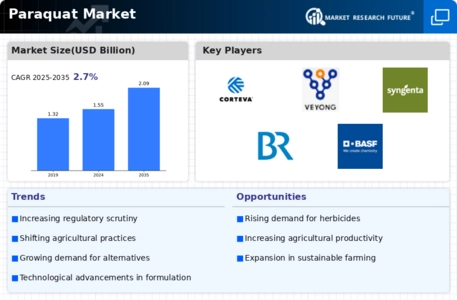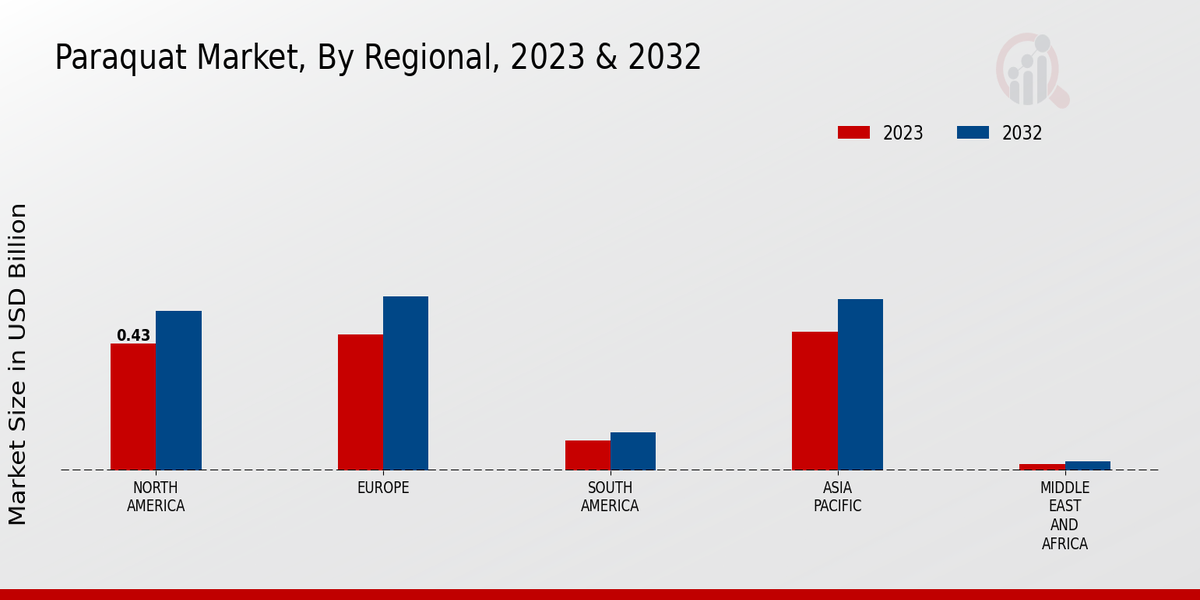Market Growth Projections
Increasing Demand for Herbicides
The Global Paraquat Market Industry is experiencing a notable surge in demand for herbicides, driven by the need for effective weed control in agricultural practices. As farmers seek to enhance crop yields and reduce competition from weeds, paraquat emerges as a preferred choice due to its rapid action and effectiveness. In 2024, the market is projected to reach 1.55 USD Billion, reflecting a growing reliance on chemical solutions in agriculture. This trend is likely to continue as global food production demands increase, suggesting that the Global Paraquat Market Industry will play a crucial role in meeting future agricultural challenges.
Technological Advancements in Agriculture
Technological innovations in agricultural practices are significantly influencing the Global Paraquat Market Industry. The introduction of precision agriculture techniques and advanced application methods enhances the efficiency of paraquat usage. These advancements not only improve the effectiveness of weed management but also promote sustainable practices by minimizing chemical runoff. As a result, the market is expected to grow steadily, with projections indicating a value of 2.09 USD Billion by 2035. This growth underscores the importance of integrating technology with traditional agricultural methods, thereby positioning the Global Paraquat Market Industry as a vital component of modern farming.
Global Population Growth and Food Security
The increasing global population is a significant driver for the Global Paraquat Market Industry, as it intensifies the demand for food production. With projections indicating a population of nearly 9.7 billion by 2050, the pressure on agricultural systems to produce more food becomes paramount. Paraquat, known for its effectiveness in controlling weeds, is likely to be a key player in enhancing agricultural productivity. This growing need for food security is expected to propel the market, aligning with the projected growth to 2.09 USD Billion by 2035. Thus, the Global Paraquat Market Industry is positioned to address these pressing food production challenges.
Emerging Markets and Agricultural Expansion
Emerging markets are increasingly adopting modern agricultural practices, which is positively influencing the Global Paraquat Market Industry. Countries in Asia and Africa are witnessing a shift towards mechanized farming and the use of chemical herbicides to boost productivity. This trend is particularly evident in regions where traditional farming methods are being replaced by more efficient techniques. As these markets expand, the demand for effective herbicides like paraquat is expected to rise, contributing to the overall growth of the market. The Global Paraquat Market Industry is thus likely to benefit from this agricultural expansion, enhancing its global footprint.
Regulatory Environment and Safety Standards
The regulatory landscape surrounding herbicides, including paraquat, is evolving, impacting the Global Paraquat Market Industry. Stricter safety standards and regulations are being implemented to ensure the safe use of paraquat, particularly in regions where its application is prevalent. While these regulations may pose challenges, they also encourage manufacturers to innovate and improve product formulations. The market's resilience is evident as it adapts to these changes, potentially leading to a compound annual growth rate of 2.73% from 2025 to 2035. This adaptability suggests that the Global Paraquat Market Industry is likely to thrive despite regulatory pressures.







